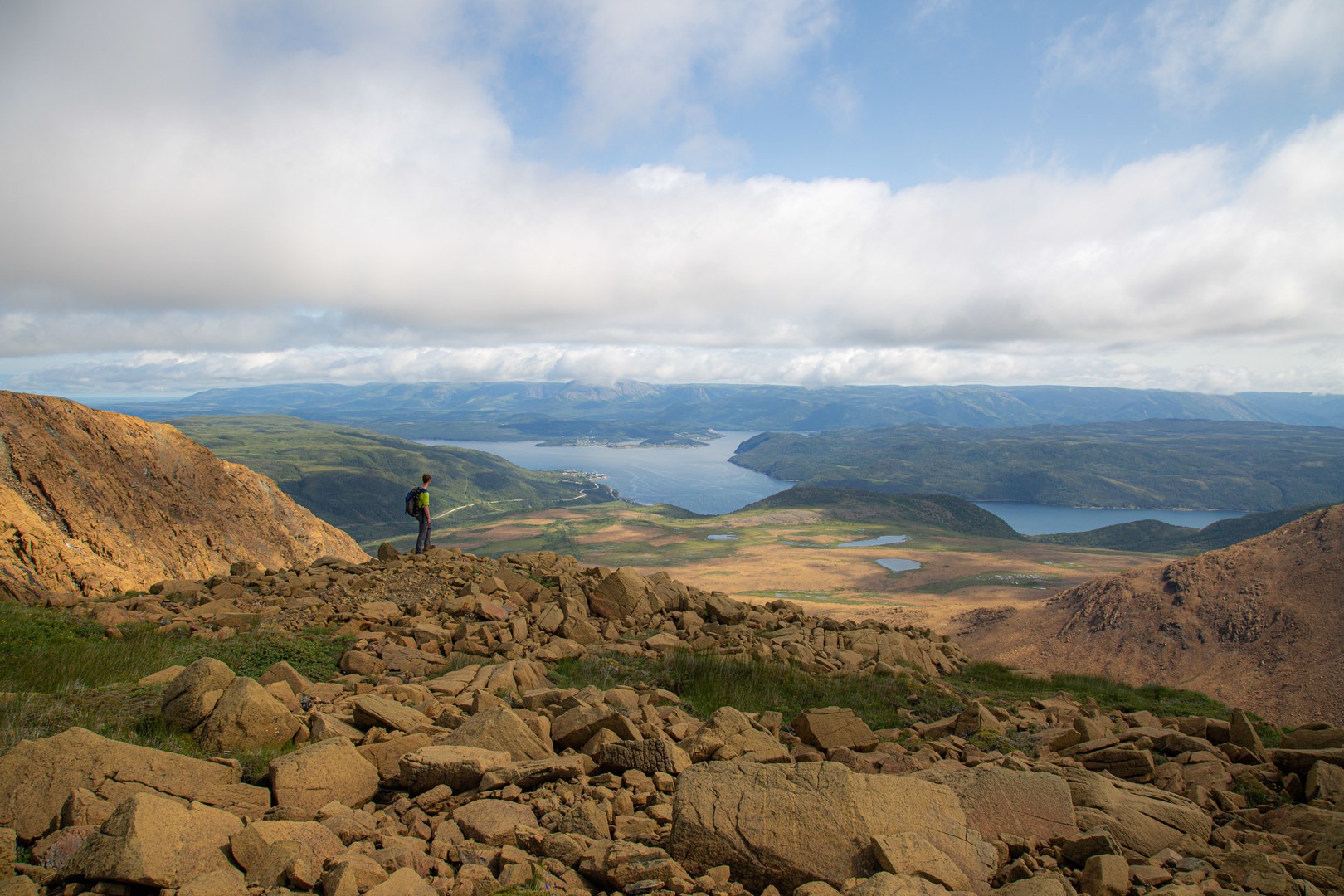You are here
The Tablelands in Gros Morne National Park are a rare place on earth, where the planet's mantle has been left exposed after the collision of two tectonic plates. In addition to being geologically intesting and signficant, The Tablelands are also a striking and beautiful area with great hiking.
There is a short, 2.5-mile out-and-back hike in the Tablelands that has great views of the valley. It is beautiful, but it doesn't allow visitors to explore farther into the valley and the upper portions of the Tablelands. To see the rest of this incredible area, you'll need to venture further from the trailhead and off trail.
One of the best way to experience the full grandeur of the Tablelands is via a loop that leads up to the rim of the Tablelands, along the rim, back down to the valley, then back along the valley floor. Because there are no trails, the loop distance varies depending on the exact path you take, but the distance typically falls between 7.5-10 miles. The loop can be done in either direction, but this adventure describes the loop done in counter-clockwise.
For maps and further information, consult this page from the Gros Morne National Park. Also, be sure to ask for more information and local tips at the visitor center.
The loop begins on the normal Tablelands trail from the main parking lot. After just 0.2 miles, the trail goes over a proper bridge; about 20 meters past that, turns right onto an unmarked path. The path can be a bit difficult to follow, but stay left of the river as you climb up the slope. When you reach the rim of the lower slope, there is a great view of "the Bowl" - which is just what it sounds like, a large bowl-shaped feature in the rock. Here, cross the river and begin climbing up the right side of the bowl, where it is less steep, about 1.2-1.3 miles from the parking lot. Climb until the grade becomes much less steep. Begin traversing to the left, turning south, towards the main rim of the valley.
At roughly 2 miles, you will reach the edge of the rim, with the first major viewpoint of the Tablelands. From here, continue heading south along the rim. Although there is no marked path, the route should become fairly obvious, as you can see where you will need to go to reach the far side of the valley to descend.
At about 3.5 miles from the parking lot, you will cross a river, where snow can remain year-round. From here, continue another 0.8 miles to a second river, which you also cross. Slightly beyond this river, there is a pond followed by a second branch of this second river; here is the best place to descend via a steep and rocky route. There may be cairns marking the path down, but do not rely on them; it is important to be confident in using natural features as waypoints.
After descending the initial steep bit, the route continues on the right side of Winter House Brook (the east side). The path is steep in some spots, but eventually flattens out to a mellow grade. Although there is a well-used trail in some spots here, it can be hard to follow in other spots; simply following the brook will bring you back to the established Tablelands trail. When you reach the established trail (where plenty of tourists will likely be waiting and exploring the river), simply follow it back to the parking lot.
This loop can be done in either direction. Parks Canada recommends doing the loop clockwise; however, in this direction, it can be difficult to find the proper part of the bowl to descend. On the other hand, doing the loop counter-clockwise means you can use several waypoints, including the two branches of the river and the small pond, to find the proper spot to descend at the south end of the valley.
Whichever direction you choose, be sure to have sufficient navigational skills before embarking, as well as a high-quality map. It is also highly advised only to do the off-trail hike on a day with good visibility, which aids in route-finding significantly. If properly prepared for, this hike is an absolutely amazing and a unique hike that is well worth the effort.
Logistics + Planning
Current Weather: Powered by Dark Sky



























Comments
Sign In and share them.